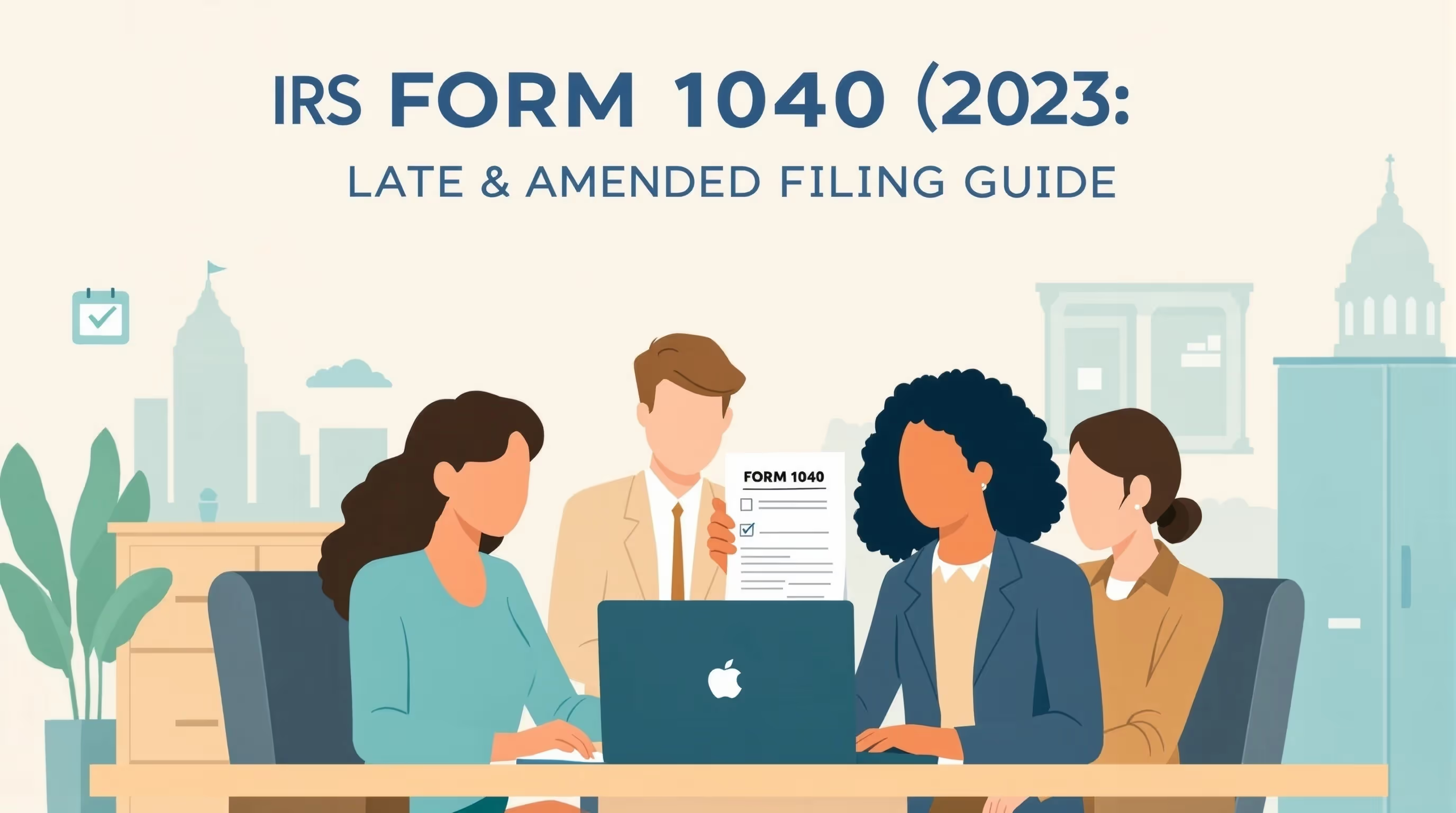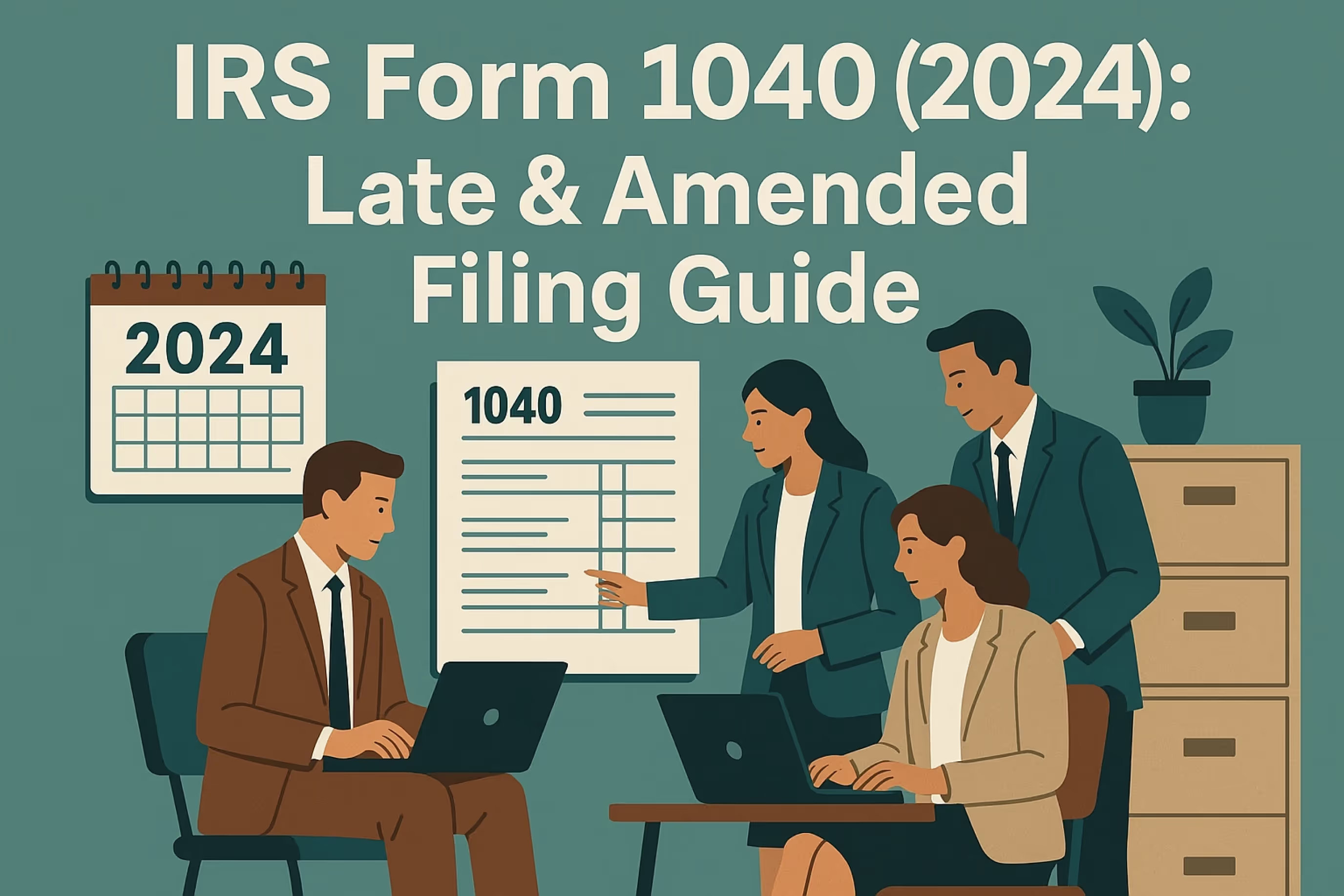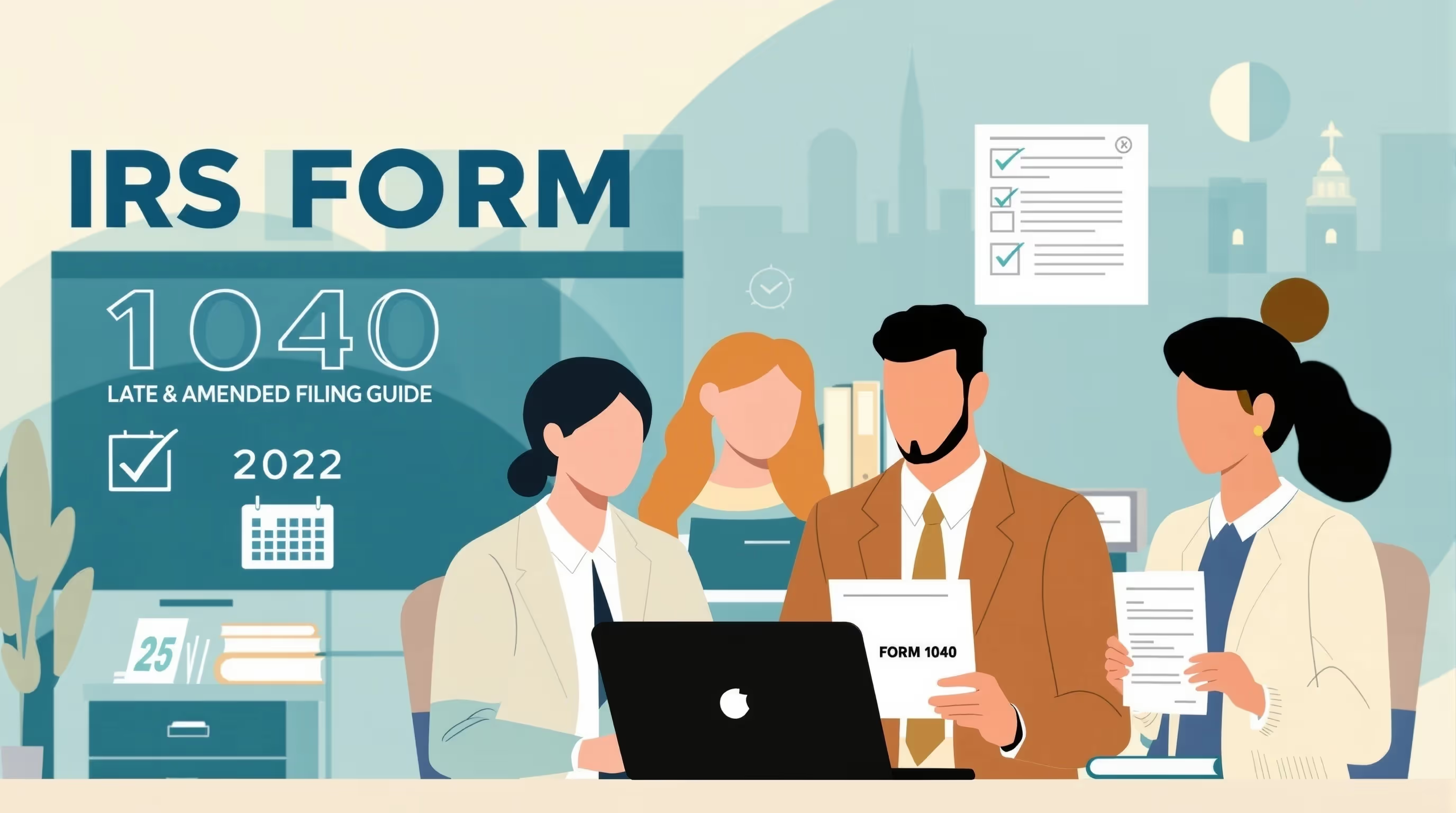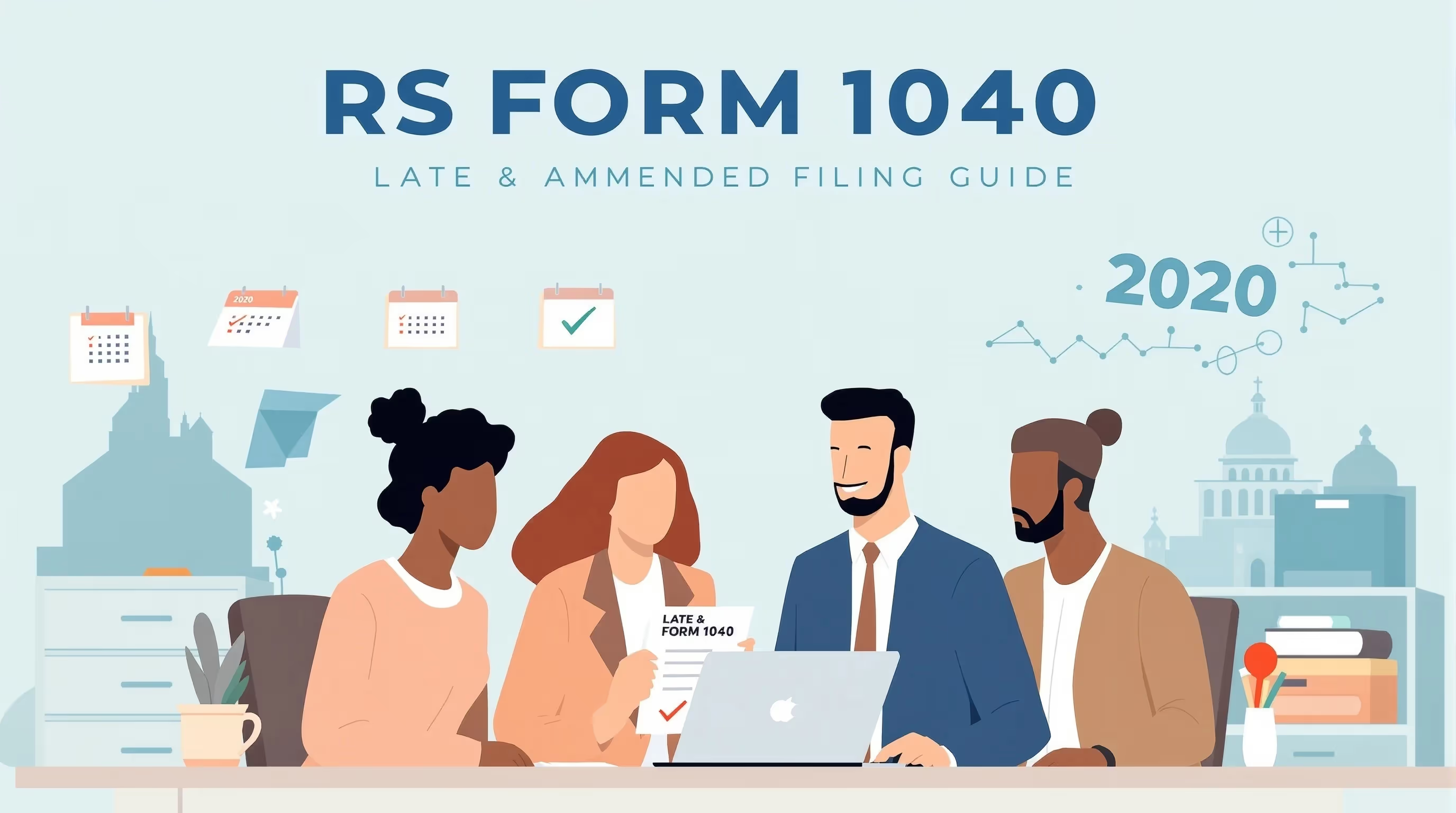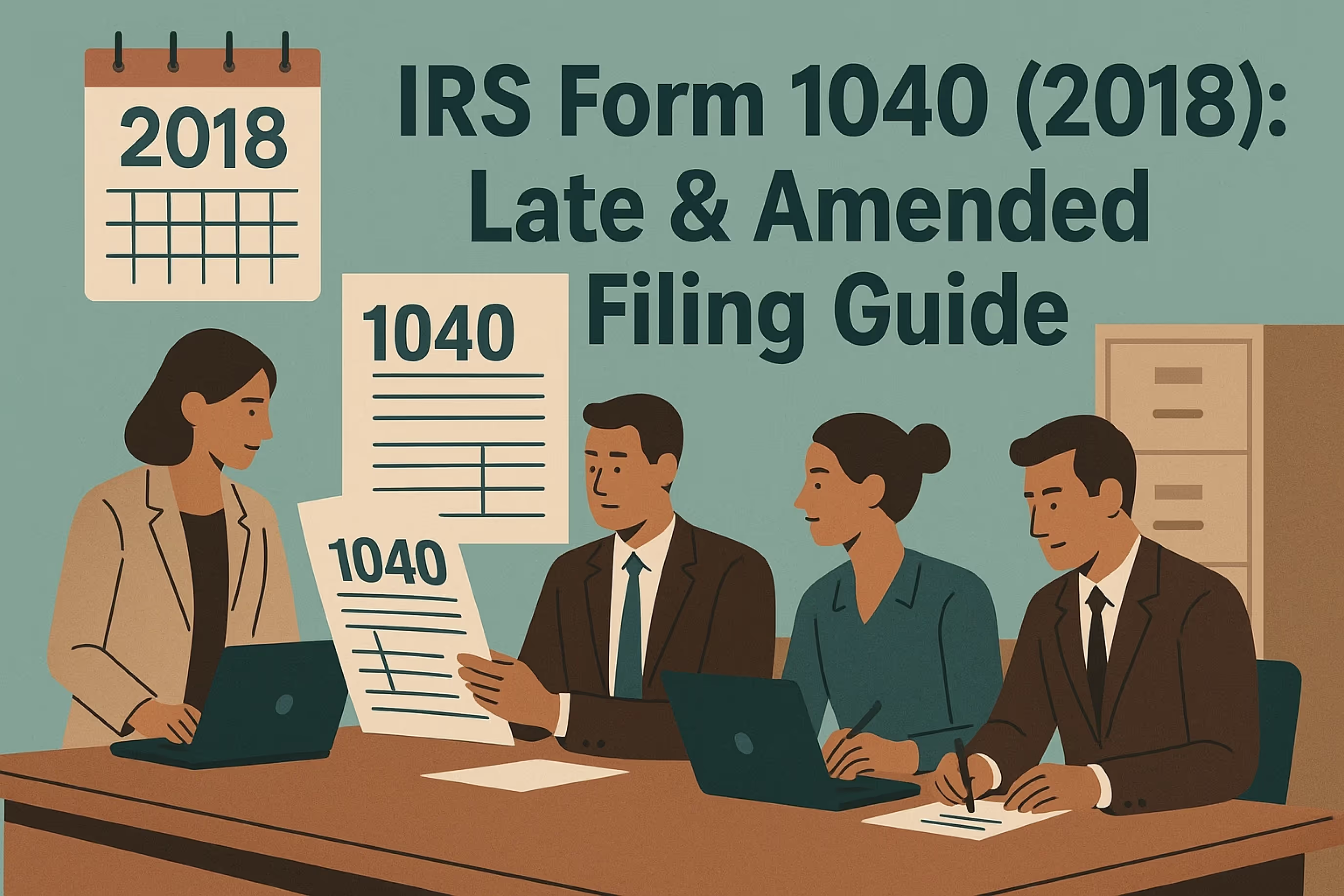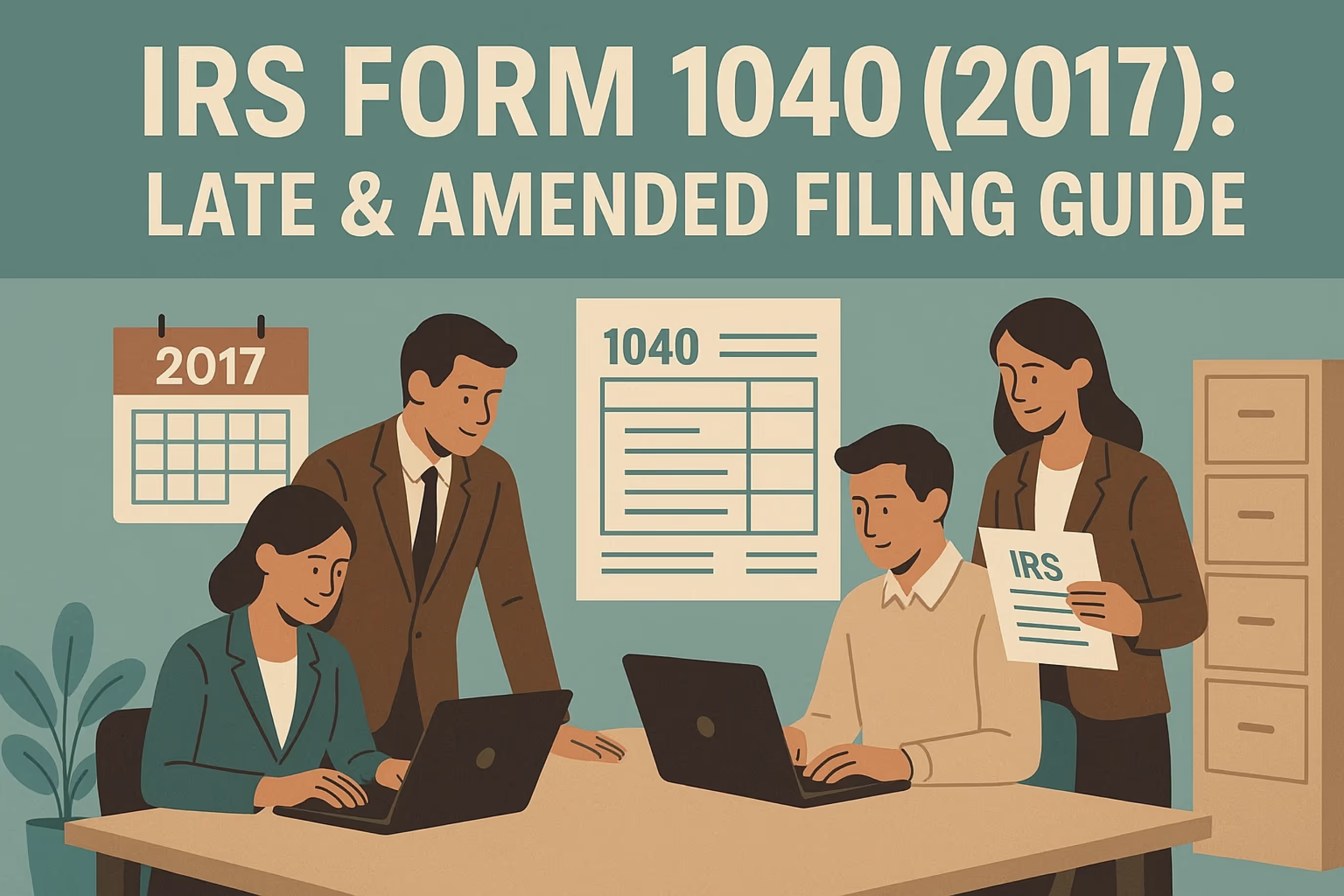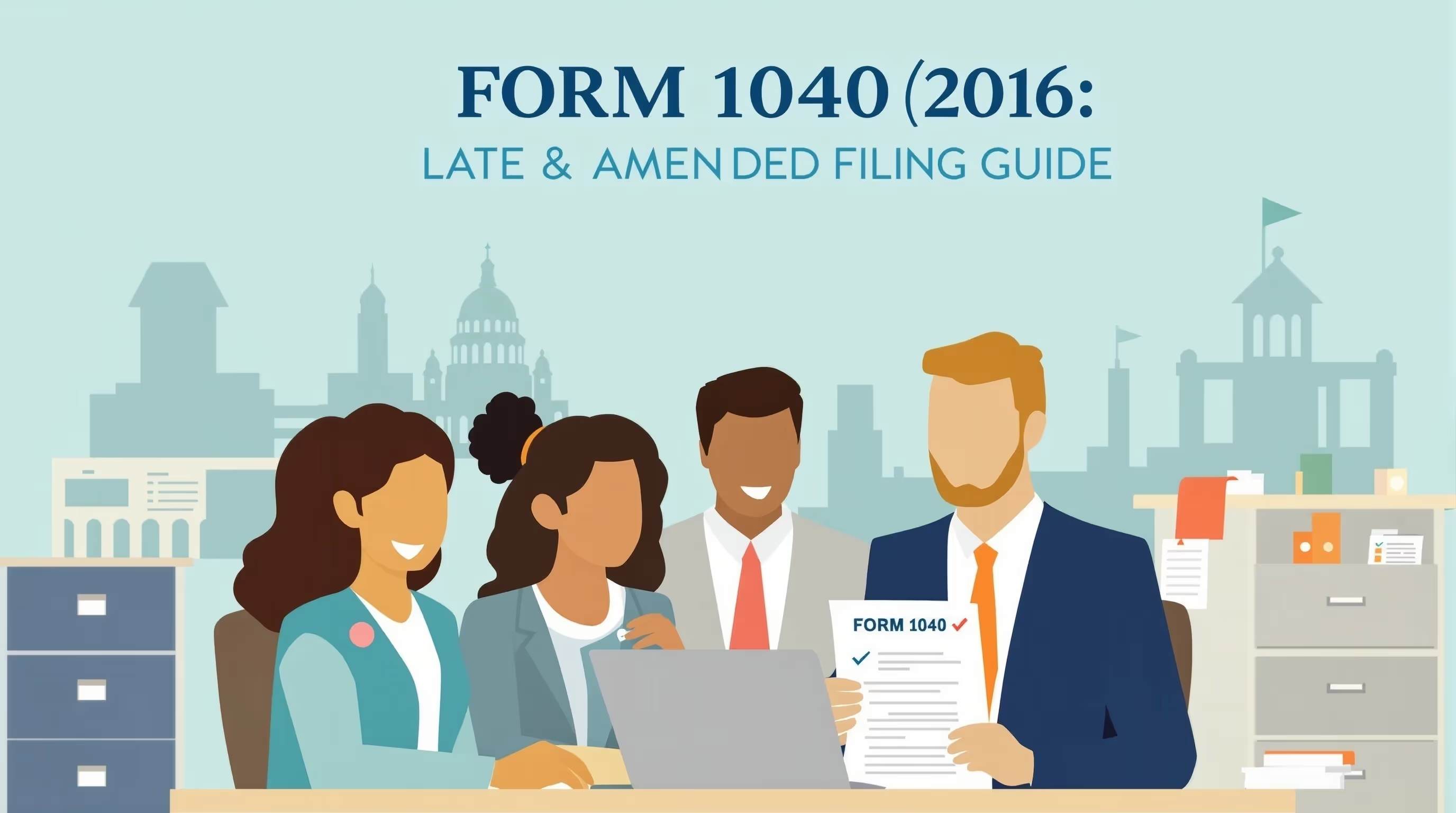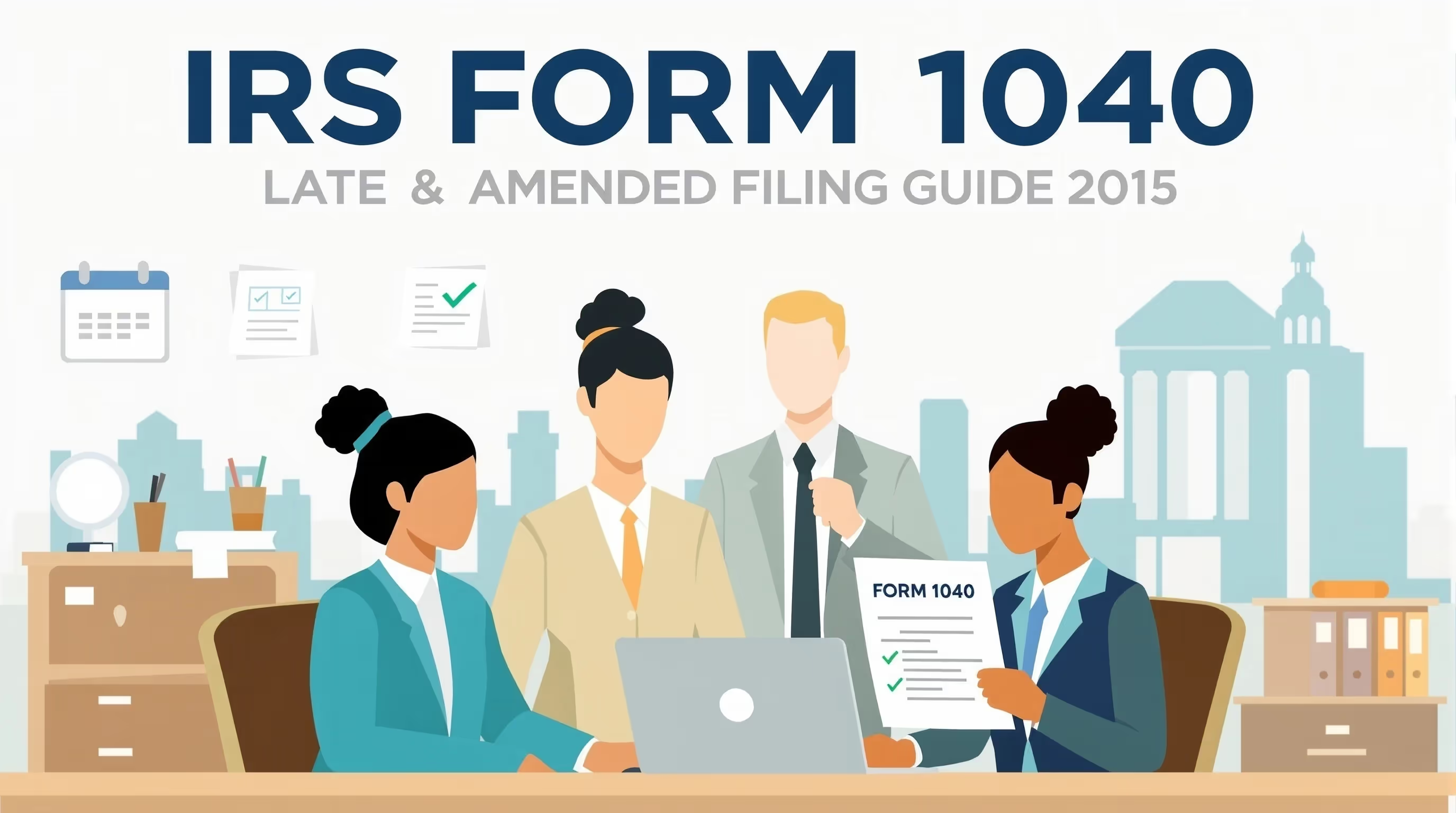IRS Form 1040 (2021): Late & Amended Filing Guide
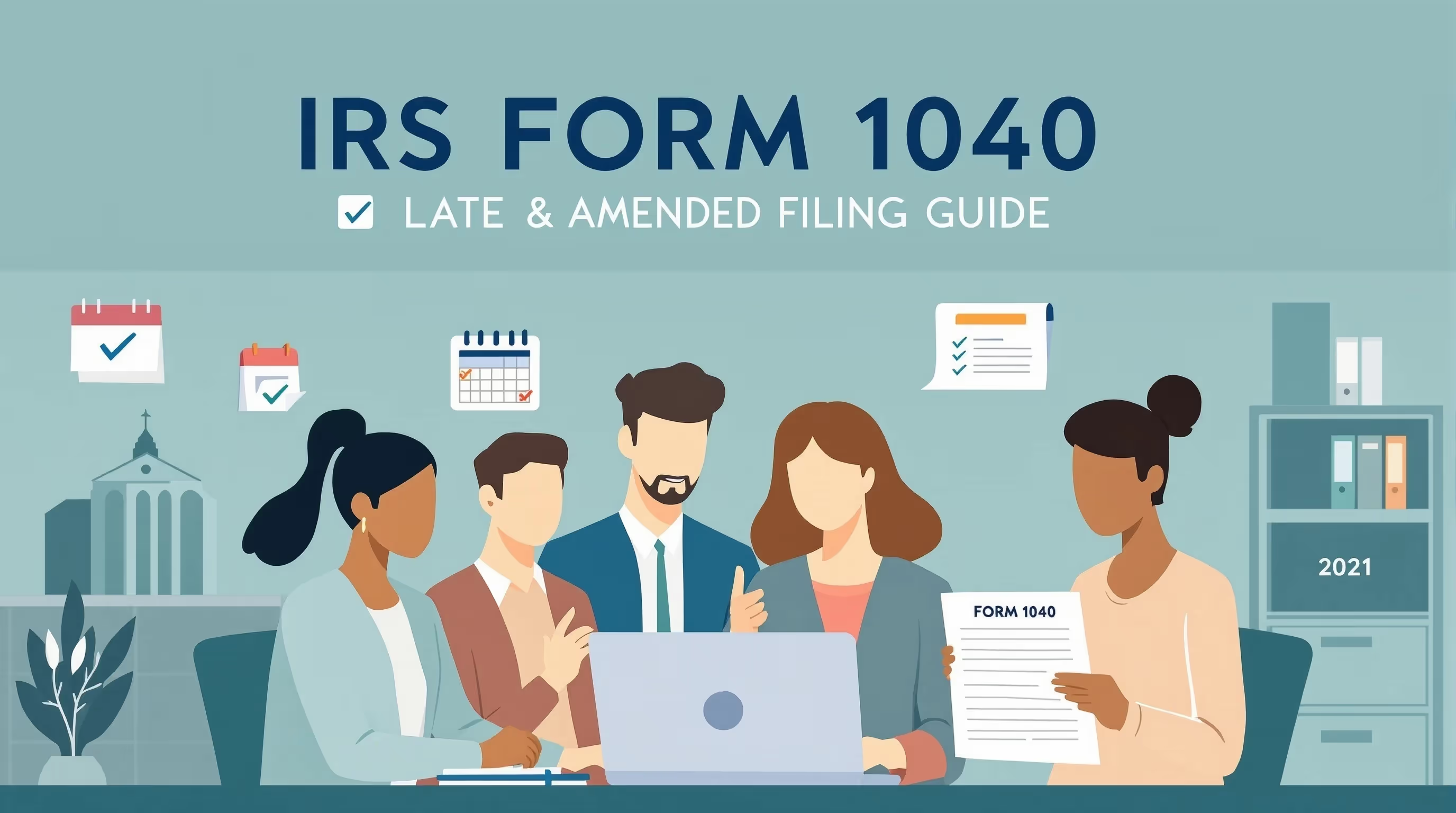
What IRS Form 1040 (2021) Is For
IRS Form 1040 (2021) is the standard income tax return used by U.S. citizens and resident aliens to report income, deductions, and tax credits for the 2021 tax year. It’s how the IRS calculates whether you owe unpaid taxes or are due a tax refund.
You are required to file this form if your income meets the minimum filing thresholds—generally $12,550 for single filers, $25,100 for married filing jointly, and $18,800 for head of household. Filing ensures you meet your tax obligations and helps avoid future payment penalties or collection notices from the Internal Revenue Service.
When You’d Use Form 1040 for 2021 (Late or Amended Filing)
If you missed the original tax deadline of April 18, 2022, filing your 2021 return now helps replace any substitute return the IRS created and restores your eligibility for refundable credits. Completing your unfiled federal returns also reduces the chance of additional penalties and enforcement actions.
Generally, you have three years from the original due date—until April 18, 2025—to claim a refund. After that date, any unclaimed refund is forfeited. If you owe taxes, filing now helps reduce penalties and interest. The IRS may have already issued a substitute return for you, which rarely includes deductions or credits you qualify for. Filing your own 2021 income tax return replaces that substitute return.
Key Rules Specific to the 2021 Tax Year
The 2021 tax year included several important updates under the American Rescue Plan Act:
- The Child Tax Credit increased to $3,600 per child under the age of six and $3,000 for children aged six to seventeen.
- The Child and Dependent Care Credit became refundable and expanded for eligible taxpayers.
- The Earned Income Credit had no upper age limit and allowed the use of 2019 income to calculate the benefit.
- The Premium Tax Credit had no income cap.
- The IRS required all filers to answer a question about virtual currency transactions.
- Standard deductions for 2021 were $12,550 (single), $25,100 (married filing jointly), and $18,800 (head of household).
Step-by-Step (High Level)
- Get your records: Request your wage and income transcripts from IRS.gov before filing to verify income, estimated tax payments, and withholdings.
- Use the correct form: Only use the 2021 version of Form 1040 and its accompanying instructions; do not use any newer versions.
- Attach the following schedules: Schedule 8812 for the Child Tax Credit, Schedule EIC for the Earned Income Credit, and any 1099s or W-2s.
- Mail or e-file: Follow the mailing address listed in the 2021 instructions. If available, e-file through an authorized provider.
- Keep copies: Keep everything for your records, especially in case of IRS correspondence or payment plan requests.
If you continue receiving IRS notices or prefer a representative to communicate with the IRS on your behalf, consider authorizing someone using our IRS Power of Attorney guide.
Common Mistakes and How to Avoid Them
- Using wrong deduction or credit amounts: Verify all 2021 limits before filing to ensure your figures match IRS guidelines.
- Entering incorrect Social Security numbers: Double-check each SSN for accuracy, especially for dependents and spouses.
- Forgetting to include income from 1099 forms: Review all received 1099s to make sure no income is omitted from your return.
- Leaving out required signatures: Ensure all taxpayers sign the return—both spouses must sign if filing jointly.
- Mailing to the wrong address: Use the correct IRS mailing address listed in the 2021 Form 1040 instructions for your state and filing situation.
Only use the 2021 version of Form 1040 and its schedules. You can find prior-year tax packages in the IRS Form Help Center to ensure you’re using the correct version.
What Happens After You File
If you file your taxes late, your return generally takes 8–12 weeks to process. Late filers might experience longer delays if income verification is required.
If you owe taxes, you’ll receive a notice showing your balance and any penalties or interest. The IRS calculates a late filing penalty of 5% per month, up to a maximum penalty of 25%. A late payment penalty of 0.5% per partial month will continue until the full amount is paid. Penalties and interest accrue from the original due date—April 18, 2022.
If you fail to file entirely, a failure-to-file penalty applies. The minimum penalty is the smaller of $450 or 100% of the unpaid tax. Payment penalties and interest can quickly increase your total bill. The IRS occasionally offers limited penalty relief to eligible taxpayers. If you can’t pay your balance in full, you can request an installment agreement or a monthly plan. Our IRS payment plan guide explains the types of plans available and how to apply.
The IRS considers reasonable cause when determining late filing penalties. You may be eligible for IRS penalty abatement if circumstances qualify under reasonable cause or first‑time abatement rules. For security when accessing your IRS account, look for the locked padlock icon on IRS.gov to confirm the site is secure before entering any payment details.
FAQs
What’s the penalty for filing my 2021 return late?
The IRS charges a late filing penalty of 5% of the unpaid taxes per month, up to a maximum of five months. There’s also a late payment penalty of 0.5% per month on any unpaid balance. The maximum combined penalty can reach 47.5% if you file and pay late. Interest accrues daily until the balance is paid in full.
How do I get my wage and income information for 2021?
You can request transcripts from your IRS online account or call 800-908-9946. These show income from W-2s, 1099s, and other sources to help you calculate the correct refund or tax due. Reviewing transcripts before you file prevents mismatches and delays.
Can I still claim a 2021 refund if I never filed a tax return for that year?
Yes, you can still claim a refund for the 2021 tax year, but only until April 18, 2025—the three-year limit from the original due date. Filing sooner reduces the risk of missing refundable credits and delays in your refund.
What if I owe taxes I can’t pay immediately?
You can apply for a payment plan online or by filing Form 9465. The IRS allows monthly payments based on your financial situation. Even with a plan, interest and late payment penalties continue until the balance is fully paid. Paying as much as possible upfront helps reduce long-term costs.
What if I filed after the April deadline but before receiving a notice?
If you filed late but before the IRS contacted you, penalties might still apply, but they could be lower. The IRS considers reasonable cause for late filing, such as illness or natural disasters. You can request penalty abatement if you qualify.
10 Steps to Complete IRS Form 1040 (2021)
Follow these steps to complete and submit your IRS Form 1040 (2021) correctly.
1. Gather all necessary income documents, such as W-2s, 1099s, and other income records.
2. Collect receipts and records for deductions and credits you plan to claim.
3. Download the correct IRS Form 1040 (2021) and instructions from the IRS website.
4. Fill out your personal information accurately, including your Social Security number.
5. Enter your income figures as documented, ensuring accuracy to avoid delays.
6. Calculate and claim eligible deductions and credits following the IRS instructions to reduce your tax liability.
7. Review your completed form for accuracy and completeness.
8. Note: Choose the option below that fits your specific situation. The correct submission method depends on your IRS notice or the form's official instructions.
• Submit Your Form to the Correct IRS Office
Follow the address or fax number in your IRS notice or from your assigned revenue officer.
If no contact is listed, call 800-829-1040 to confirm where to send it.
Use certified mail or another trackable method and keep proof of delivery.
• File or Mail Your Form 1040 (2021)
Confirm the correct submission address on the official IRS page: https://www.irs.gov/filing/where-to-file-paper-tax-returns-with-or-without-a-payment
Use certified mail and keep proof of delivery if you mail your form.
• Mail Your Form 1040 (2021)
Send to the appropriate IRS address listed on the IRS website or your notice.
Use certified mail and keep proof of delivery.
• Submit Your Form
Follow the instructions on the IRS page for electronic or fax submission: https://www.irs.gov/
Keep fax confirmation or submission receipt with your records.
9. Keep Copies for Your Records
Retain your completed form, all attachments, and proof of mailing for at least three years.
Store both paper and digital copies securely in case the IRS requests verification later.
10. Sign and mail your form. 📞 Need peace of mind before you send it? Call +(888) 260 9441 or schedule a free form review at https://www.gettaxreliefnow.com/.
If you complete these 10 steps, your IRS Form 1040 (2021) should be properly filed and you'll minimize the chance of IRS delays, penalties, or rejections.








